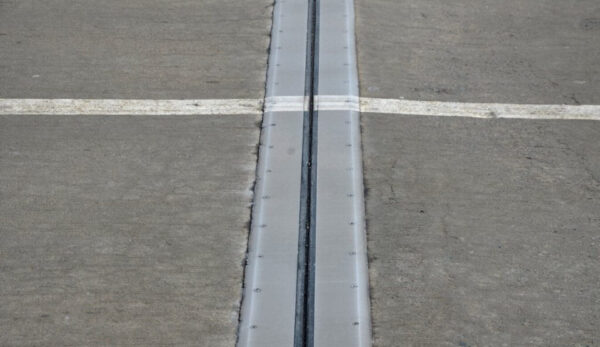Aggregates are most commonly used engineering material in construction and have many applications as they have several desirable characteristics.
Aggregates are the granular materials that are mixed with cement and water to form concrete. They occupy generally 60 to 75% of the concrete volume and 70 to 85% by mass.
Aggregates can be natural such as sand, gravel, and crushed stone or artificial, such as slag, fly ash, and recycled concrete.
As aggregates contribute a major portion in concrete, determining its properties plays a vital role which affects the performance and durability of concrete in various ways.
Let’s dive into the properties of aggregates in this blog.
Properties of Aggregates
Some of the important characteristics or properties of aggregates are given below:
- Strength
- Particle shape and size
- Specific gravity
- Bulk density
- Porosity
- Moisture content
- Bulking
- Surface Texture
- Cleanliness
- Grading
The physical properties of aggregates in detail are given below:
Strength
Aggregate strength property is very important as it affects the quality of concrete. If the
strength has high crushing strength then it will provide good strength to the concrete. They depend on various factors such as size,shape, texture and mineral composition.
- The strength should be at least equal to that of concrete. Aggregates have a compressive strength much higher than the usual range of concrete strength.
- Various tests are conducted on aggregates such as crushing test, impact test and ten percent fines in order to determine the crushing value, toughness and hardness.
- A typical stress-strain curve for aggregates is shown below.

Source: Engineering materials by S.K.Duggal
Particle shape and size
Aggregate shape and size plays a vital role as it impacts durability and strength of concrete. Aggregates with smaller and angular particles require more water and cement to achieve workability to increase strength and durability whereas larger and rounded particles require less water and cement which decrease strength and durability.
- The size and shape of aggregates has an impact on the strength, workability and durability of the concrete.
- Smaller aggregates have higher surface area and require more water and cement for a given workability whereas larger aggregates have lower surface area and require less water and cement for a given workability.
- Rounded and irregular shaped aggregate are highly workable but yield low strength concrete whereas flaky aggregates require more cement paste which is not desirable as it produces maximum voids.
- Angular shaped aggregates are considered best for concrete as they provide a good bond with the cement paste and yield high strength concrete.
Specific gravity
Most important property for concrete mix design and quality control to measure relative density of an aggregate compared to water.
- It is defined as the ratio of weight of the aggregates to the weight of an equal volume of water.
- Specific gravity and porosity of aggregates have great influence on the strength and absorption of concrete. Most of the natural aggregates have specific gravity which lies in a range between 2.6 and 2.7.
- A low specific gravity indicates lower density, higher porosity and therefore poor durability and low strength.
- Higher specific gravity means higher density and lower porosity.It also means heavier and more compact concrete.
Bulk Density
The mass of aggregates required to fill the container of specified volume is known as bulk density. It affects the strength and durability of concrete and asphalt mixtures; also measures compactness and porosity of the aggregates.
- The bulk density of aggregate depends upon their packing, The particles shape and size, grading and the moisture content.
- A higher bulk density is an indication of fewer voids which are to be filled by sand and cement for coarse aggregates.
- If the voids in the concrete are more, then it has low strength.
Porosity
It is defined as the ratio of voids to present in a given volume of aggregate. Higher the porosity, lower the density and weaker is the aggregate and vice-versa.
- Small holes or cavities known as pores are formed because of entrapped air bubbles in the rocks during their formation.
- The porosity of rocks is generally less than 20%.
- The concrete becomes permeable and affects the bond between the aggregates and the cement paste, resistance to freezing and thawing of concrete and resistance to abrasion of aggregate.
- The porous aggregate absorbing more moisture results in the loss of workability of concrete at a much faster rate.
Moisture content
The word itself is self- explanatory which says the amount of moisture i.e. water present in the pores of the aggregate particles.
- The amount of water present in the pores is known as moisture content.
- It is expressed as a percentage of the weight of the saturated surface dry aggregate.
- It affects the water- cement ratio and the strength of concrete.
- A high moisture content increases the effective water-cement ratio to an appreciable extent and may result in weakness in concrete whereas lower moisture content means less water in the mix and higher strength.
- The moisture content of aggregates also affects their shrinkage and swelling behavior.
- Higher moisture content means more shrinkage and swelling potential. Lower moisture content means less shrinkage and swelling potential.
Bulking
Bulking in aggregates occurs when moisture causes the aggregates’ volume to rise. This occurs as a result of the water pushing the particles apart by creating a thin film surrounding them. Bulking has an impact on the concrete’s workability and mix proportion.
- It is defined as the increase in the volume of a given mass of fine aggregate caused by the presence of water.
- Bulking increases with increase in the moisture content up to a certain limit beyond that further increase in the moisture content results in the decrease of volume and at a moisture content representing saturation point, the fine aggregate shows no bulking.
- Coarse aggregate also bulks but the bulking is so little hence it is neglected.

Surface Texture
The shape and degree of roughness of the particles that make up a mixture of sand, gravel, and other materials are known as surface texture in aggregates. It impacts the strength and durability of the final concrete as well as how well the aggregates bond with the cement and water.
- The surface texture of aggregates affect the bond strength between the aggregate and the cement paste or other binding material.
- Surface texture depends on hardness, grain size, pore structure, structure of the rock and the degree to which forces acting on the particle surface.
- Rough textured aggregate surfaces can provide better interlocking and improve the overall strength of the resulting material.
Influence of texture on Strength

Source : Concrete Technology by M.S.Shetty
Surface texture characteristics of aggregates as classified in IS :383-1970 is shown below
Surface Characteristics of Aggregates

Source : Concrete Technology by M.S.Shetty
Cleanliness
For the quality of concrete, the cleanliness of the aggregates is crucial. Granular components known as aggregates account for the majority of the volume of concrete. Dust, clay, organic material, and other contaminants that could compromise the strength and longevity of concrete should not be present. Aggregate cleanliness can be assessed by washing them with water and gauging how much material makes it through a sieve.
- Aggregates should be free from impurities such as dirt,clay, other contaminants and deleterious substances which are likely to interfere with the process of hydration, preventing effective bond between the aggregate and the cement mix.
- The impurities sometimes reduce the durability of the aggregates.
- Aggregates free from impurities help to improve the workability and strength of the resulting material.
- Sometimes excessive silt and clay contained in fine or coarse aggregate may result in increased shrinkage or increased permeability in addition to poor bond strength.
- Clean aggregates can help to reduce the risk of cracking and other forms of damage.
Limits of deleterious materials (IS :383-1970)

Source : Concrete Technology by M.S.Shetty
Grading
The process of classifying aggregates based on their size and shape is known as grading. For making lasting and strong concrete mixtures, it is crucial. Sieving, washing, and other techniques can be used for grading. A sample’s distribution of aggregate sizes is depicted by the grading curve.
- The grading of aggregates refers to the distribution of particle sizes in a given sample.
- The gradation, or size distribution of aggregates can affect the workability, strength and durability of concrete or other material.
- Well-graded aggregates have a uniform distribution of particle sizes and a low void ratio.
- They require less water and cement for a given workability and produce dense and strong concrete.
- Poorly-graded aggregates have a non-uniform distribution of particle sizes and a high void ratio.
- They require more water and cement for a given workability and produce weak and porous concrete.






